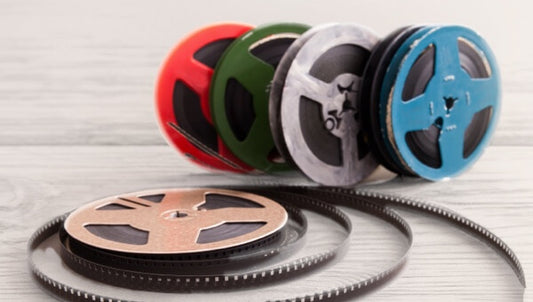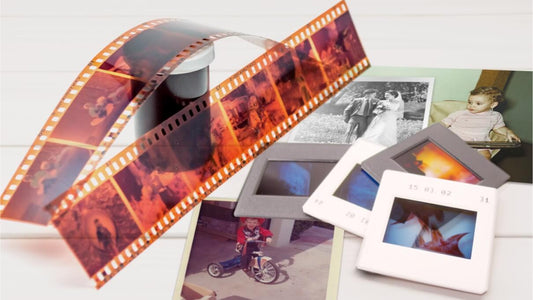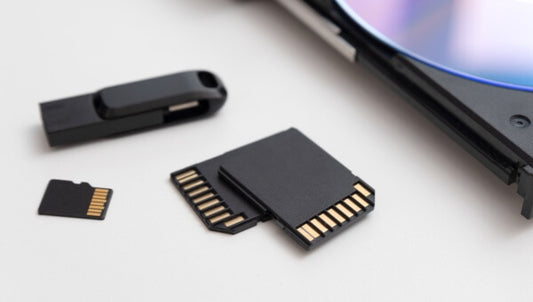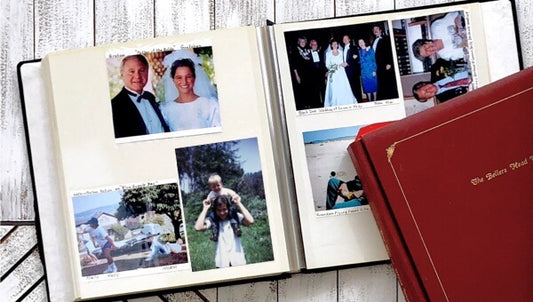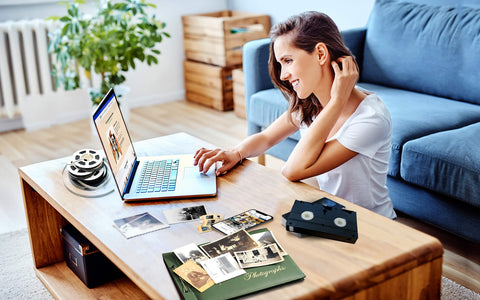It can be easy to take sound video recording for granted because we all have a smartphone that offers this capability, but up until the late 1920s, silent films were not only popular, but were necessary. These early films are historical artifacts and classics that deserve a revisit due to their revolutionary filmmaking techniques and influence.
Capture loves preserving memories for over 12 million families, but we also love to preserve the history of film, cameras, and motion picture technology. That’s why we put together this list of the top 15 films and what makes them so great!
Keep reading to learn about the birth of silent film, 15 of the most important silent films like “The Great Train Robbery,” “The Birth of a Nation,” and “The Gold Rush,” as well as key figures during the silent film era and how silent films impacted the American film industry.
Jump to:
- The Birth of Silent Film
- Noteworthy Silent Films
- Key Figures in Silent Film Era
- The Impact of Silent Films
- The Transition from Silent to Sound
The Birth of Silent Film
Before blockbusters, surround sound, and CGI, cinema was entirely visual. The silent film era, which lasted from the late 1800s to the late 1920s, laid the foundation for modern filmmaking - introducing camera techniques, storytelling methods, and cultural icons that still influence movies today. Here's how it all began.
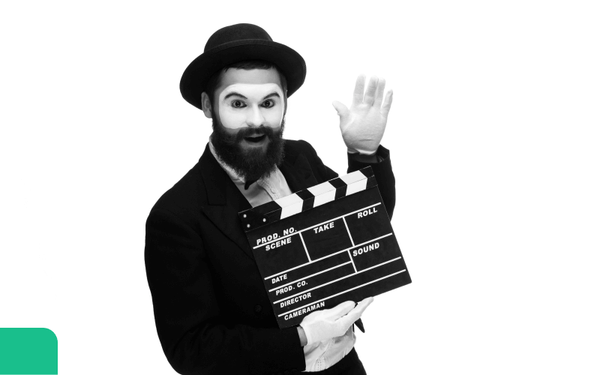
What is a Silent Film?
Silent films are movies without synchronized recorded sound. Instead of spoken dialogue, they used title cards for key lines, expressive acting, and live music during screenings. Pianists and small orchestras often performed in theaters to enhance the mood of the film.
What is the oldest silent movie?
The silent film era introduced not only revolutionary technology, but also the first wave of recognizable movie stars and influential productions that defined early cinema.
The first true silent film is widely considered to be the Roundhay Garden Scene (1888), recorded by Louis Le Prince on an old fashioned camera. Although only two seconds long and showing people walking in a garden, it marked the beginning of the motion picture industry.
While Roundhay Garden Scene holds the title of the oldest silent movie, early narrative silent films soon followed. Notable examples include the Lumière Brothers’ Workers Leaving the Factory (1895) and The Great Train Robbery (1903), which introduced storytelling elements that set the stage for modern cinema.
Bring Your Family Films Into the Future
The silent film era showed us how powerful visual storytelling can be. At Capture, we help you preserve the same kind of legacy—by converting old VHS tapes, camcorder footage, and film reels into lasting digital memories.
Convert Video to Digital with Capture
Early Technological Milestones
Several technological breakthroughs helped shape the silent film era.
Motion Studies and the Birth of Film Material
The work of Eadweard Muybridge laid the foundation for visual storytelling. His motion photography experiments in the 1870s, including the famous galloping horse sequence, proved that movement could be broken down into individual frames - a critical concept for future filmmakers.
Building on this, American inventor George Eastman developed a stable type of celluloid film in 1888. This flexible film stock made it possible to record multiple frames in quick succession, forming the mechanical basis of early motion pictures. This innovation eventually led to formats like Super 8 film and photographic film rolls that are still used today.
If you’re wondering when video cameras were invented, these breakthroughs mark the very beginning of that journey.
The Lumière Brothers and the First Public Projection
In 1895, Auguste and Louis Lumière held the first public screening of a motion picture in Paris using their invention, the Cinématographe. This projector-camera hybrid (a type of projection that works similar to how a projector works today) allowed them to record, develop, and project film, a major step forward in how movies were viewed.
They projected short clips like Workers Leaving the Lumière Factory, and audiences were stunned by the realism of the moving images. This event is widely recognized as the birth of the movie theater experience. Later, the film equipment company Pathé of New York acquired the Lumière Brothers’ patents, helping distribute their innovations globally.
Edison’s Sound Film Experiment and the Silent Era’s Rise
Although Thomas Edison introduced the phonograph in 1877 and produced the first known synchronized sound film, The Dickson Experimental Sound Film, in 1894, these early attempts at combining sound and image weren’t yet practical.
Instead, silent films dominated for the next three decades. From the 1890s until 1929, movie theaters showcased films without recorded dialogue, relying instead on title cards, expressive acting, and live music to bring stories to life. A few silent movies were still released into the early 1930s as studios transitioned to sound.
Lasting Innovations from the Silent Era
This period wasn't just about lack of sound, it was about developing the visual language of cinema. Early filmmakers pioneered techniques like:
- Three-point lighting
- Continuity editing
- Camera movement (panning, tracking shots)
- Close-ups and framing for emotion
- Matte shots and practical effects
Many of these methods are still used today, proving just how advanced silent-era filmmakers truly were.
Because of these advancements, the silent era gave us many historically important films, which we’ll explore next in our list of 15 influential titles.
Timeline of Silent Film Milestones
From the invention of sound recording to the first public screenings, here’s a quick look at the key moments that defined the silent film era:
| Year | Milestone |
|---|---|
| 1877 | Thomas Edison invents the phonograph (sound recording begins) |
| 1888 | George Eastman develops celluloid film; Roundhay Garden Scene is recorded |
| 1894 | Edison’s Dickson Experimental Sound Film introduces recorded sound |
| 1895 | Lumière Brothers host first public film screening in Paris |
| 1906 | The Story of the Kelly Gang, first feature-length narrative film, released |
| 1927 | The Jazz Singer premieres with synchronized sound dialogue |
| 1929 | Silent film era ends as studios transition to “talkies” |
Noteworthy Silent Films
These are some of the most important silent films for the evolution of the camera, filmmaking industry, and motion pictures. Some are groundbreaking dramas while others are comedies, short films, controversial films, or portrayals of the events of the time period.
Roundhay Garden Scene (1888)
This is typically recognized as the first silent film ever recorded. It was captured on an old fashioned camera by French inventor Louis Le Prince in northern England in 1888. It’s only 1.66 seconds long and depicts several people in a garden. While that might not be special, it marked the beginning of film history.

The Great Train Robbery (1903)
“The Great Train Robbery” by Edwin S. Porter of the Edison Manufacturing Company is considered one of the great masterpieces of early silent cinema due to the practical special effects, ambitious stunts, cohesive storyline, and techniques like matte effects, wide shots, and camera pans. It also marked the beginning of Western film themes and plots.

A Trip to the Moon (1902)
This movie is a science-fiction adventure film that depicted satirical critiques of French imperialists. It also started the French “faerie” tradition and is usually considered the first silent film of the science-fiction film genre. The most iconic scene is the image of the space capsule landing on the Moon’s eye.

The Birth of a Nation (1915)
“The Birth of a Nation” by D.W. Griffith and starring Lillian Gish, Henry B. Walthall, and John Ford, is controversial due to the depiction of post-Civil War society including the KKK, Lincoln’s assassination, and racist depictions of African Americans. Because of this, it’s historically important and influences the Civil Rights Movement and conversations about race in American society.
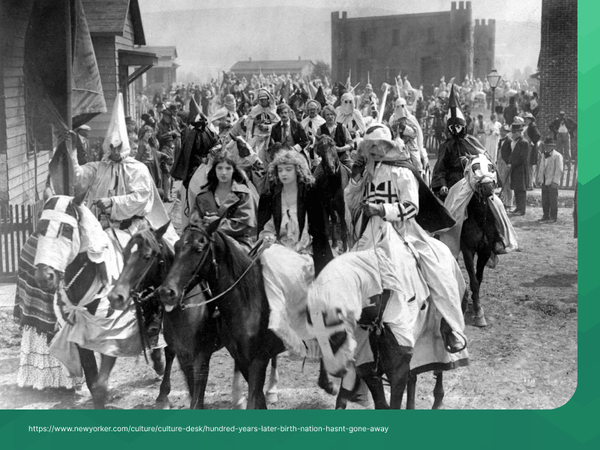
Intolerance (1916)
Another motion picture by D. W. Griffith, one of the pioneers of silent film, “Intolerance” was released in response to “The Birth of a Nation.” It consists of four different stories from different time periods, each with a distinct move and color, making it an ambitious departure from typical chronological and straightforward narrative film techniques.
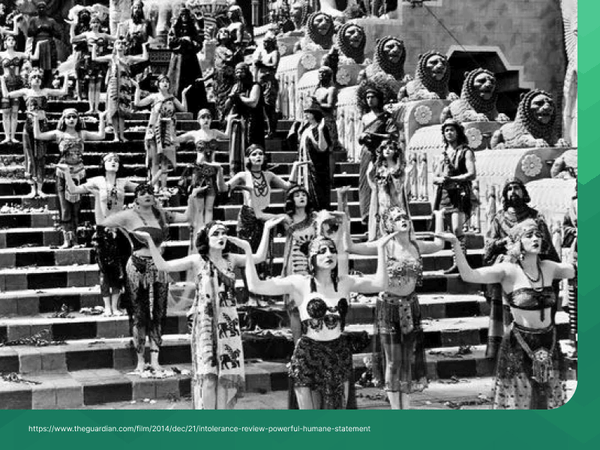
The Cabinet of Dr. Caligari (1920)
Long before horror movies of the 1980s, 90s, and 2000s came “The Cabinet of Dr. Caligari.” It’s also considered a definitive expressionist film in Germany and uses a dark visual style with landscapes, shadows, streaks, structures, and other special effects.

Nosferatu (1922)
Though there have been many depictions of Bram Stoker’s Dracula, “Nosferatu” is the first. While the feature-length film was technically a silent film, it had an original score composed by Hand Erdmann that was performed at the premiere.
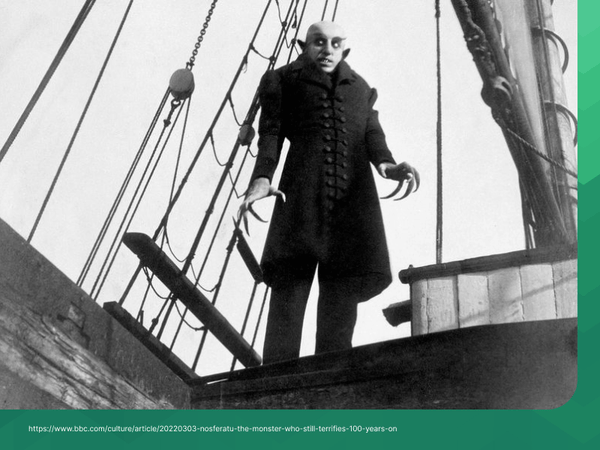
Battleship Potemkin (1925)
This Soviet feature film by silent film director Sergei Eisenstein is often considered one of the greatest films of all time. The montage techniques used in the film have been adapted for various films including “Dune” from 2021, “Star Wars: Episode III – Revenge of the Sith,” and much more.

The Gold Rush (1925)
This comedy film by Charlie Chaplin depicted the gold rush in America. Chaplin drew inspiration from some of the oldest photographs and stories and came up with one of the most popular films of the silent era. It also made use of English intertitles and dialogue cards intermingled with Chaplin’s comedic acting and slapstick humor.

Metropolis (1927)
“Metropolis” is a groundbreaking dystopian silent film by Fritz Lang and while the original film was substantially cut, there have been several video restoration attempts. Still, it’s considered one of the most influential films of the silent era for its combination of political themes, live soundtrack, and epic storytelling.

The General (1926)
While not a hit at the time, this Buster Keaton film that was released toward the back end of silent films and early cinema history is now considered to be one of the greatest comedies of the 1920s. During the movie, Keaton performed dangerous stunts that not only amplified the comedy but created suspense and action.
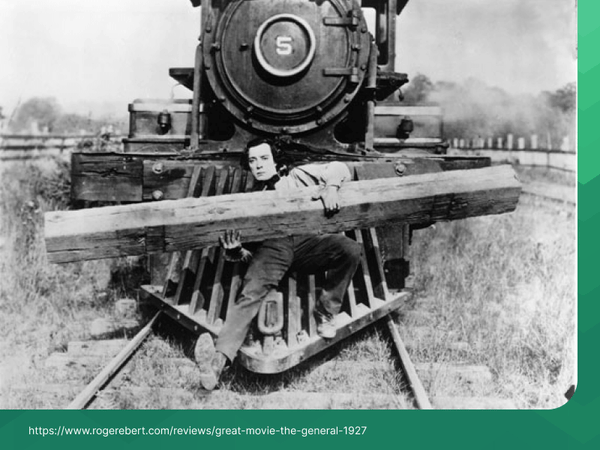
Sunrise: A Song of Two Humans (1927)
This is a romantic drama by German director F.W. Murnau and winner of multiple Academy Awards at the first ever event in 1929. It was accompanied by the first ever talking newsreels and acted as a transition to sound “talkies” of the next Hollywood, California film era.

The Passion of Joan of Arc (1928)
Considered a landmark of cinema, this film depicted Joan of Arc’s trial and execution. It was filmed on a huge concrete set and is known for its use of close-ups, exceptional acting, and groundbreaking production techniques.
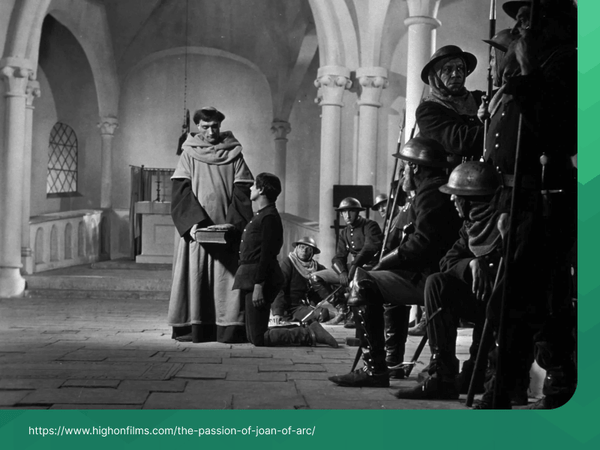
The Wind (1928)
This silent black and white movie is one of the last silent moving pictures released by the Metro-Goldwyn-Mayer film company. Considered one of the best films by Victor Sjöström and one of the greatest performances by Lillian Gish. Released at the end of the silent film era, this movie was a culmination of many of the techniques introduced in earlier movies.

City Lights (1931)
In this movie, Charlie Chaplin plays The Tramp from his earlier films who falls in love with a blind girl and develops a relationship with a millionaire who also happens to be a heavy drinker. Despite being produced in the sound era, it was a successful silent film praised by famous directors like Stanley Kubrick and Woody Allen.

Key Figures in Silent Film Era
Some of the most important figures of the silent film era include directors, innovators, and actors that propelled old video camera techniques, filmmaking methods, and artistic choices.
Georges Méliès: The Master of Movie Magic
Georges Méliès, best known for A Trip to the Moon and The Impossible Voyage, revolutionized early special effects. He introduced groundbreaking techniques such as substitution splices, multiple exposures, and hand-painted color frames. His fantastical narratives and visual creativity defined the earliest form of science fiction cinema. Méliès is also credited with creating the first known storyboard - a tool still used by filmmakers over a century later.
D.W. Griffith and Narrative Cinema
D.W. Griffith remains one of the most influential (and controversial) figures of silent cinema. His films, including The Birth of a Nation and Intolerance, introduced cinematic techniques such as cross-cutting, close-ups, and the use of large-scale sets to heighten drama and emotional engagement. While The Birth of a Nation is rightly criticized for its racist themes, its influence on editing and film structure cannot be overlooked.
Ruth Ann Baldwin, Lois Weber & Frank Borzage
While Griffith often gets credit for narrative advancement, directors like Ruth Ann Baldwin and Lois Weber helped shape silent cinema in subtler ways. Lois Weber was one of the first female directors in Hollywood and tackled complex social themes in her films. Ruth Ann Baldwin brought screenwriting skills into the director’s chair, paving the way for women in technical roles. Frank Borzage, meanwhile, was known for his emotionally rich storytelling and won the first Academy Award for Best Director in 1929.
The Comedy Greats: Chaplin, Keaton, and Lloyd
As for the greatest silent film actors, Charlie Chaplin, Buster Keaton, and Harold Lloyd defined the genre. Chaplin’s character “The Tramp” became a symbol of resilience and humanity, blending humor with deep emotion. He also wrote, directed, produced, edited, and scored most of his films.
Buster Keaton, nicknamed "The Great Stone Face," became known for his daring stunts and deadpan delivery. His ability to craft suspenseful yet hilarious sequences earned him critical acclaim. Harold Lloyd, with his iconic glasses and physical comedy, helped bridge slapstick and more grounded performances, and his work greatly influenced Chaplin’s later films.
Florence Lawrence: The First Movie Star
Before the concept of celebrity actors existed, Florence Lawrence made history as the first silent film star to receive on-screen name recognition. At a time when actors were kept anonymous, Lawrence's popularity helped studios realize the power of star-driven marketing. Known as "The Biograph Girl," she appeared in nearly 300 films and helped define what it meant to be a film celebrity - paving the way for icons like Lillian Gish, Buster Keaton, and Charlie Chaplin.
Lillian Gish: The First Lady of American Cinema
Lillian Gish brought grace and emotional depth to silent film. Often called the “First Lady of American Cinema,” she starred in influential movies such as The Wind and The Birth of a Nation. Gish’s naturalistic acting style was ahead of its time, inspiring generations of actresses including Bette Davis. She was awarded an Honorary Oscar in 1971 for her contributions to film.

The Impact of Silent Films
Silent films laid the groundwork for everything we know about cinema today. Here’s how they shaped the industry:
- They are still made and celebrated. Though rare, modern silent films are produced as homages or artistic experiments, proving the format’s timeless power.
- They introduced visual storytelling as a primary narrative tool. Without sound, filmmakers had to rely on facial expressions, body language, and cinematography to convey emotion and plot.
- They revolutionized acting techniques. Performers in silent films mastered exaggerated yet emotionally resonant gestures to connect with audiences - an art form still studied today.
- They pioneered special effects. From early matte shots to practical stunts, silent cinema pushed the limits of what was visually possible on screen.
- They created the foundation for film genres. Science fiction, westerns, romance, and comedy all have their roots in the silent film era.
- They influenced the transition to sound. The innovations of the silent era made it possible for “talkies” to evolve quickly, especially in terms of editing and camera movement.
- They left a lasting legacy on modern filmmakers. Directors today—especially those in art-house cinema—continue to draw inspiration from silent film pacing, visual composition, and mood.
The Transition from Silent to Sound
By the mid-1920s, studios and inventors were experimenting with ways to sync audio with moving pictures. Two major systems, Vitaphone (sound-on-disc) and Movietone (sound-on-film), competed to revolutionize cinema, paving the way for a new kind of movie experience.
“The Jazz Singer” from 1927 was not the first-ever motion picture with sound, but it was the first feature-length movie with synchronized dialogue and marked the end of the silent film era. While silent movies would still be made for the next few years, it wasn’t long before every movie was a “talkie” and had speaking dialogue and sound effects.
This meant a new group of directors, actors, and actresses who helped build the next phase of motion picture technology and techniques. Still, the first silent film and all the movies of the era are still around and considered classics. You can still view them on VHS or other analog formats as long as you know how to watch old video camera tapes. Their legacy lasts and they are certainly worth a watch for their humor, storytelling, and cultural impact.
Why Silent Films Still Matter - and Why Your Memories Do Too
From the first silent film, “The Roundhay Garden Scene,” to iconic silent motion pictures like “The Great Train Robbery,” “Metropolis,” “The Birth of a Nation,” and others, the silent film era is still cherished by filmmakers around the world from London to Tokyo. It’s important to ensure they last forever as digital artifacts stored in archives and museums so that their historical significance is never forgotten.
Just like those movies, your memories and legacy also deserve to be passed down to future generations. If you have aging home movies on reels or tapes, now is the perfect time to explore 8mm Film to Digital conversion with Capture, so your family's legacy can stay timeless too.







